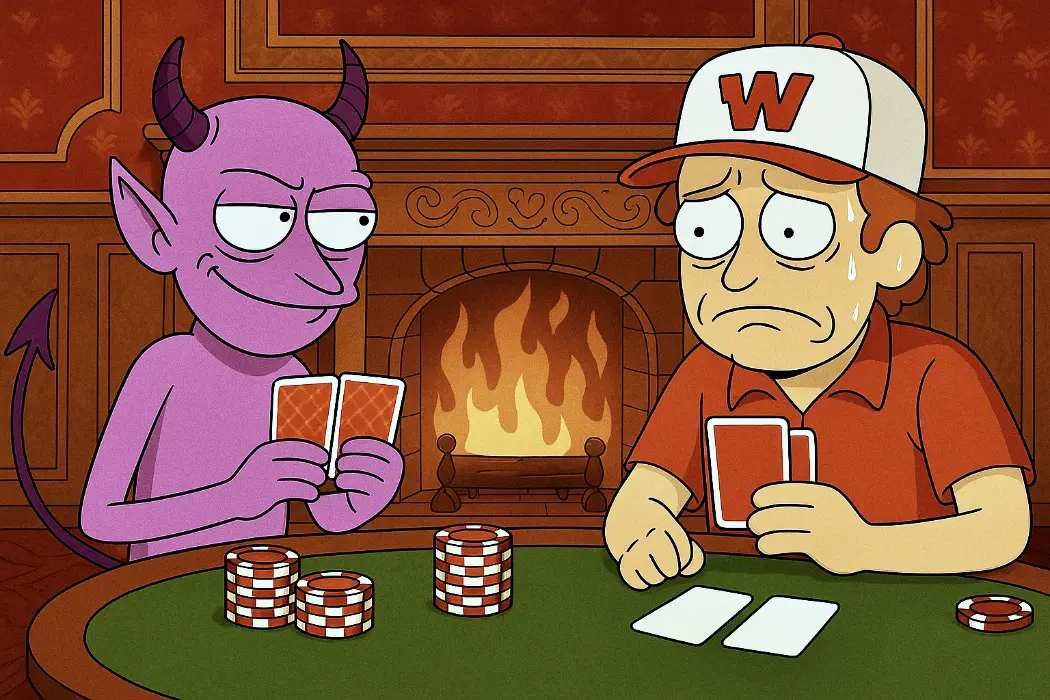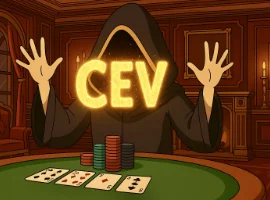From the beginning of this course, we’ve mentioned these two playing styles several times without diving deep—until now:
GTO (Game Theory Optimal) is a strategy that, when executed perfectly, cannot be beaten over the long term. Even if your opponent knows exactly what you're doing—if you told them, "in this spot, I’ll do X; in that spot, I’ll do Y" — they still wouldn't be able to consistently profit against you.
Why?
Because GTO is based on mathematical balance. It ensures that no matter how your opponent responds, they cannot exploit you.
Let’s take the classic example of Rock-Paper-Scissors:

In Spin & Go, GTO works the same way:
And here’s the key: every time your opponent deviates from GTO (which is inevitable for humans), you gain chips.
This concept comes from what is known as a Nash Equilibrium, a foundational principle in game theory.


To better understand, imagine two ice cream vendors on a beach.
These two vendors are trying to sell as many ice creams as possible.
Let's assume that customers will always go to the vendor closest to them.
Each rectangle—blue or red—represents the portion of the beach covered by each vendor.
If a customer is within the blue rectangle, they will buy ice cream from the blue vendor. Conversely, if they are in the red rectangle, they will buy from the red vendor.
Initially, the vendors position themselves like this: the red vendor attracts just as many customers as the blue one, since each covers the same area.

But the red ice cream vendor starts gradually moving toward the center to maximize his sales. He realizes that by getting closer to the middle of the beach, he can cover more ground than his competitor.

To compensate, the blue vendor also moves — but to the right. Eventually, both vendors end up in the middle of the beach. At that point, neither can improve their position any further.
This is the famous Nash equilibrium.

In GTO, it’s the same principle: you play in a way that leaves no exploitable weaknesses for your opponents. No matter what strategy they use, you cannot be beaten in the long run.
By contrast, the exploitative strategy consists of adapting your game to take advantage of your opponent’s mistakes —even if that means becoming completely unbalanced.
A (caricatured) concrete example:
Now imagine one of the vendors (the red one) makes a poor decision and positions himself too far to the right.
The blue vendor can now abandon the Nash equilibrium and move in close to steal a larger share of the market.

This is an exploitative strategy: the blue vendor adapts to his opponent’s mistake to maximize his gain.
But if the red vendor realizes what’s happening, he can reposition himself… and the blue vendor might then lose his advantage.
Exploiting, therefore, always comes with the risk of being exploited in return.

Each strategy has its strengths and weaknesses. Let’s summarize them in a comparison table:
Spin & Go is a format with a very wide variety of opponents:
The best approach is a hybrid one:

This is exactly the approach used in the Spin Poker Sciences Ranges:
You can compare both styles, observe the differences, and understand the adjustments with the detailed explanations included for each chart.

Many players believe they’re exploiting their opponents effectively, when in reality, they’re basing their adjustments on samples that are far too small, or making inefficient adaptations.
A poor reading of your opponent’s tendencies can quickly lead to suboptimal decisions and hurt your profitability.
A classic example:
This kind of error is very common: A hasty interpretation of trends leads to rushed and counterproductive adjustments. Even experienced players sometimes fall into the trap of a false adaptation.

Let’s take another Heads-Up example:
You’re in the Small Blind (SB) facing your opponent in the Big Blind (BB).
You notice that your opponent isolates you 40% of the time from the BB. You think, “He’s raising way too much,” and decide to adjust by tightening your own range in SB, folding the weakest 20% of your hands.

Mistake!
In reality, your opponent is playing correctly. The GTO strategy itself isolates about 40% of the time in BB Heads-Up, exactly as he's doing!
And yet, GTO only folds about 5% of hands in SB. Folding your bottom 20% is therefore a very costly mistake.

This kind of misguided exploit is a common trap. Many players, convinced they’re adapting well, actually lose a lot of chips.
"Improvising an exploit is extremely difficult. Many players end up losing money trying to deviate from GTO in hopes of exploiting others."
To exploit effectively, intuition or a few recent hands is not enough.
The only reliable way to adjust your strategy is by using solver-based simulations.

But these tools are not easy to master and require databases of hundreds of thousands of hands to produce reliable results.
That’s precisely why we created the Spin Poker Sciences Ranges: the goal is to give you an all-in-one, user-friendly tool that saves you the work of analyzing massive datasets and gives you the most profitable preflop strategy for every situation.
And on top of that, each strategy is carefully explained.
So feel free to check it out!
This course is now complete.

Well done for reaching the end! I hope you enjoyed it.
What you just read is the result of several months of work and years of grinding. I really tried to write the kind of content I would have loved to have when I was starting out in Spins.
You’re now part of the small group of players who made it through this entire course. You’ve acquired all the essential foundations to start improving seriously and confidently in Spin & Go.
So once again, congrats—and good luck at the tables!
Gandalf.
For any questions, feedback, ideas, or just to say hello, feel free to reach out at contact@pokersciences.com — I’ll be happy to reply.













